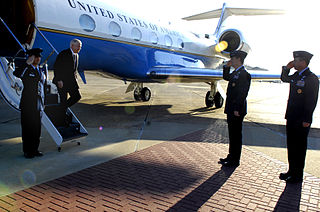
The 42nd Air Base Wing is a United States Air Force unit assigned to Air University of Air Education and Training Command. It is stationed at Maxwell-Gunter Air Force Base, Alabama and is the host unit for Maxwell-Gunter. The wing's primary mission is to support all activities of Air University, the 908th Airlift Wing and other tenant units stationed at Maxwell-Gunter.

The 25th Attack Group is an active United States Air Force unit, stationed at Shaw Air Force Base, South Carolina. It was activated in February 2018 as a Geographically Separate Unit to operate unmanned aerial vehicles and is assigned to the 432d Wing, which is located at Creech Air Force Base, Nevada. As of 2020, the group manages five MQ-9 Reaper attack squadrons, as well as the 25th Operations Support Squadron, which provides intelligence, weather, and administrative support.
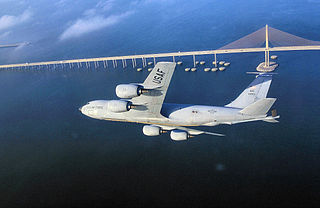
The 91st Air Refueling Squadron is part of the 6th Air Mobility Wing at MacDill Air Force Base, Florida. It operates the Boeing KC-135R Stratotanker aircraft conducting air refueling missions.

The 344th Air Refueling Squadron is a unit of the US Air Force, part of the 22d Air Refueling Wing Air Mobility Command at McConnell Air Force Base, Kansas. It operates the Boeing KC-46 Pegasus aircraft conducting aerial refueling missions.

The 2d Bombardment Squadron is an inactive United States Air Force unit. Its last assignment as a Boeing B-52 Stratofortress squadron was with the Strategic Air Command 22d Bombardment Wing stationed at March Air Force Base, California. It was inactivated on 1 October 1982. The unit was redesignated as the 2d Strategic Squadron as a Boeing KC-135 Stratotanker rotational squadron with the 306th Strategic Wing and was last active at RAF Mildenhall, England in 1992.

The 528th Bombardment Squadron is an inactive United States Air Force unit. It was last assigned to the 380th Bombardment Wing at Plattsburgh Air Force Base, New York, where it was inactivated on 1 July 1991.

The 427th Reconnaissance Squadron is an active United States Air Force (USAF) unit assigned to Beale Air Force Base, California.

The 851st Strategic Missile Squadron is an inactive United States Air Force unit. It was last assigned to the 456th Strategic Aerospace Wing, stationed at Beale Air Force Base, California. It was equipped with the HGM-25A Titan I intercontinental ballistic missile, with a mission of nuclear deterrence. It was the last Titan I squadron to achieve alert status on 1 February 1961. The squadron was inactivated as part of the phaseout of the Titan I on 25 March 1965.

The 857th Bombardment Squadron is one of the two predecessors of the 557th Tactical Air Support Squadron, an inactive United States Air Force unit, formed in 1985 by the consolidation of the 857th with another inactive bombardment squadron. It has never been active under its most recent designation.

The 53d Electronic Warfare Group is a component unit of the 350th Spectrum Warfare Wing of the Air Force Warfare Center, Air Combat Command, headquartered at Eglin Air Force Base, Florida.
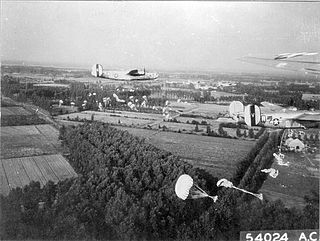
The 506th Bombardment Squadron is an inactive United States Air Force unit. It was last assigned to the 44th Bombardment Wing at Chennault Air Force Base, Louisiana, where it was inactivated on 15 June 1960.

The 343d Bomb Squadron is a United States Air Force Reserve squadron, assigned to the 307th Operations Group. It is stationed at Barksdale Air Force Base, Louisiana.

The 527th Bombardment Squadron is an inactive United States Air Force unit. It was last assigned to the 379th Bombardment Wing at Homestead Air Force Base, Florida, where it was inactivated on 9 January 1961, when its parent wing converted to the Boeing B-52H Stratofortress..
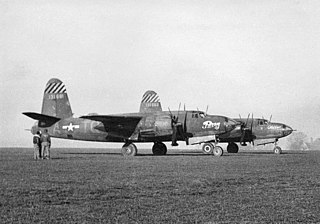
The 969th Airborne Warning and Control Squadron is an inactive United States Air Force unit. It was formed in 1985 by the consolidation of the 559th and 659th Bombardment Squadrons.
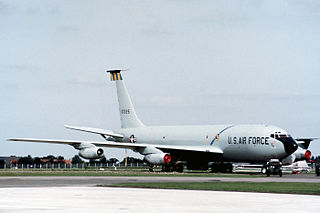
The 407th Air Refueling Squadron is an inactive United States Air Force unit. It was last assigned to the 42nd Bombardment Wing at Loring Air Force Base, Maine, where it was inactivated on 1 October 1990.

The 915th Air Refueling Squadron is an inactive United States Air Force unit. It was last assigned to the 72d Bombardment Wing at Ramey Air Force Base, Puerto Rico where it was inactivated on 30 June 1971 when the Air Force transferred Ramey to Military Airlift Command.

The 19th Military Airlift Squadron is an inactive United States Air Force unit. It was last assigned to the 62d Military Airlift Wing, Military Airlift Command, stationed at McChord Air Force Base, Washington. It was inactivated on 22 December 1969.

The 6th Air Defense Missile Squadron was an air defense unit of the United States Air Force. It was assigned to the New York Air Defense Sector of Aerospace Defense Command, at Suffolk County Air Force Base, New York, where it was inactivated on 15 December 1964. The squadron had its headquarters at Suffolk County Air Force Base, while the firing batteries of the squadron were at the nearby Suffolk County Air Force Base Missile Annex.

The Army Air Forces Antisubmarine Command was formed in the fall of 1942 to establish a single command to control antisubmarine warfare (ASW) activities of the Army Air Forces (AAF). It was formed from the resources of I Bomber Command, which had been carrying out the antisubmarine mission in the Atlantic and Caribbean since the Attack on Pearl Harbor due to the lack of long range Naval aviation in that area.

The 968th Expeditionary Airborne Air Control Squadron is a provisional unit of the United States Air Force. It has been activated twice during the Global War on Terror.























